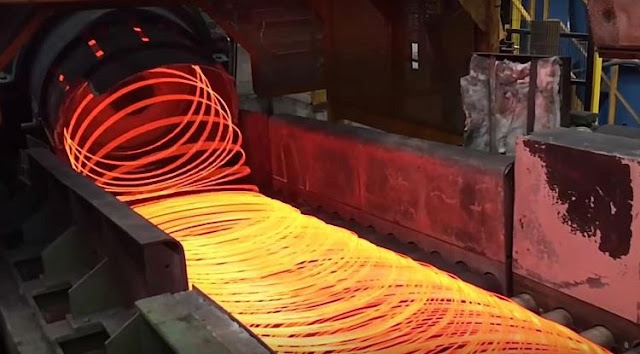Technical Progress Of High Speed Wire Rod Rolling Mill
Technical progress of high-speed wire rod rolling mill as followings:
1) Continuous, torsionless and high-speed rolling. Roughing rolling and intermediate rolling are arranged alternately, and pre-finishing rolling is installed in front of the finishing mill. The maximum final rolling speed is designed to reach 120 m/s.
According to the latest production practice, the maximum rolling speed will be guaranteed according to different specifications of wire rods. For example, in 2010, Siemens Austria Steel United Corporation (Morgan Company was annexed by the company) designed and manufactured high-speed for Xuanhua Iron and Steel Company. The guaranteed final rolling speed of the wire rod rolling mill is small wire rod Φ5.5-7.5 mm | 112 m/s, Φ5mm | 105 m/s for medium and 85 m/s for small diameter 6 mm quenched threaded steel.
Improving the finishing rolling speed of the wire rod mill is a systematic project. It involves not only the main rolling mill machinery and electrical equipment but also the number of finishing mills, the rack spacing, and the cooling system. It does not affect the mechanical properties of products because of the high finishing rolling speed and the high finishing rolling temperature.
It also requires supporting equipment such as a spinning machine and flying shear to withstand the high-speed impact of wire rods.
2) Adding reducing and sizing equipment to improve product accuracy and solve the temperature control problem in the wire rod finishing rolling process.
3) Increasing the cross-section of the feed billet can not only meet the need for an upstream continuous caster to improve the productivity and quality of the billet but also increase the coil weight and increase the productivity and yield of the wire rod rolling mill.
4) The qualified billet is heated and soaked directly into the heating furnace through the hot charging roller. The hot charging temperature can reach over 600 C, which improves the productivity of the heating furnace, reduces the energy consumption during billet heating and the loss of oxide scale during billet cooling and heating, and improves the metal yield.
5) Low-temperature rolling. The starting rolling temperature is controlled at 950 C. The stiffness of the mill stand and the capacity of the main motor can meet this requirement in order to achieve overall energy savings and reduce metal burning.
6) Controlled cooling and temperature rolling.
7) Single-pass system. All products (small 5.0-25mm) only need to change rollers on four reducing and sizing mills, and no rollers need to be changed for other mills, thus significantly improving the productivity and productivity.
8) The latest generation of spinning machines and winding stations. In the form of asymptotic bending, the ideal trajectory of wire moving in the spinning tube is given, so that the wear of the spinning tube can be reduced and the running stability can be achieved.















